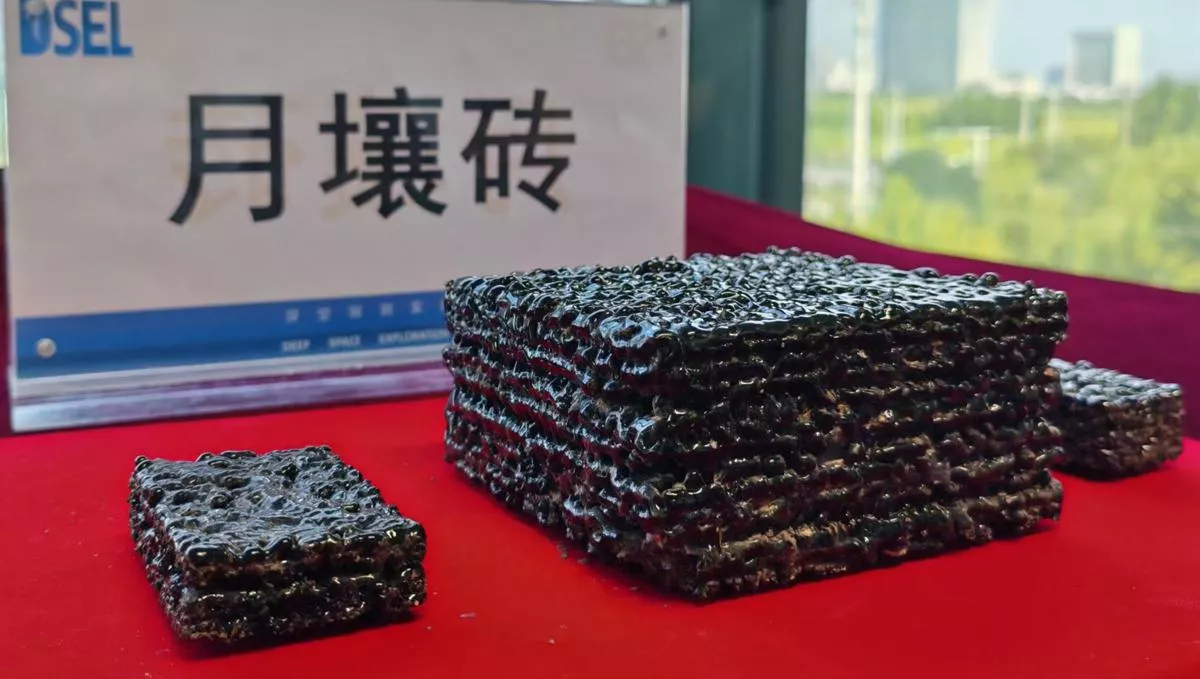Chinese tech builds construction material from Moon dust for future lunar cities
Chinese researchers have unveiled a groundbreaking device that could transform how humans construct habitats on the moon. Acting like a 3D printer powered by concentrated sunlight, the machine turns lunar soil, known as regolith, into durable construction bricks, eliminating the need to transport building materials from Earth.
The innovation comes from the Deep Space Exploration Laboratory in Hefei city, a hub for advanced scientific research in eastern China.
According to reporting on the Phys.Org website, the system uses a parabolic reflector to capture intense solar energy, which is then transmitted via fiber optic bundles. At the focal point, light intensity reaches more than 3,000 times normal sunlight, generating temperatures above 1,300°C — hot enough to melt regolith into solid bricks.
These bricks are dense and strong, ideal for constructing shelters, roads, and landing platforms on the moon. Entire lunar bases could theoretically be built using only the local terrain and the sun’s energy. Yet, the engineers note that regolith bricks alone cannot hold atmospheric pressure in the moon’s vacuum and low gravity.
Instead, they will serve as outer shielding for pressurized habitats made from rigid or inflatable structures, offering critical protection against radiation and micrometeorites. This layered approach would combine safety with efficient use of lunar resources.
The two-year development faced significant hurdles, such as managing the varied composition of lunar soil and optimizing solar energy transfer. To overcome these, the team created multiple simulated regolith types for testing. This meticulous process helped ensure the system could adapt to the moon’s challenging environment.
One of the device’s most notable features is its complete independence from Earth-based supplies. Senior engineer Yang Honglun highlighted that “the machine uses no additives,” relying solely on lunar soil. This would drastically cut the cost and logistical burden of setting up long-term moon bases.
The team’s ambitions extend well beyond brickmaking. Yang described a vision that includes manufacturing building modules, assembling them robotically, and verifying structures under actual lunar surface conditions. The ultimate goal is a scalable, automated construction process enabling permanent human presence on the moon.

To validate its performance, Chinese astronauts aboard the nation’s space station will test simulated lunar bricks, that have been delivered by the Tianzhou 8 cargo craft in November 2024, under various space conditions. These experiments will examine their thermal resistance, structural strength, and radiation-blocking properties, providing vital data for future off-Earth construction.
By Nazrin Sadigova








